cindy
Full Member
Posts: 226
|
Post by cindy on May 6, 2012 8:14:58 GMT
B. filifolia (taller plant on the left) and B. liniflora(?) 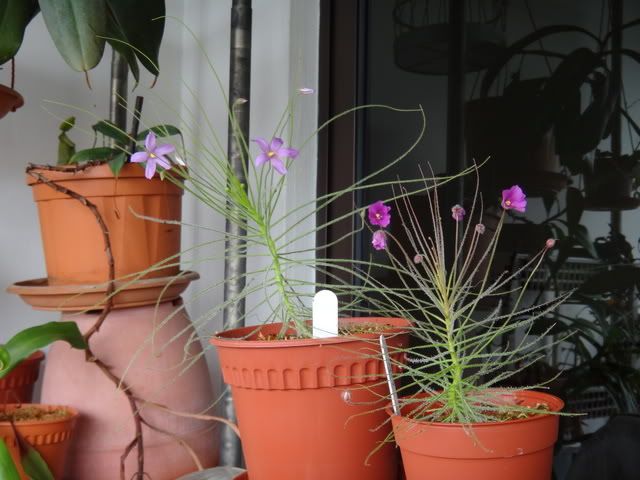 B. filifolia - leaves are almost 20cm long, large flowers with narrow lilac petals 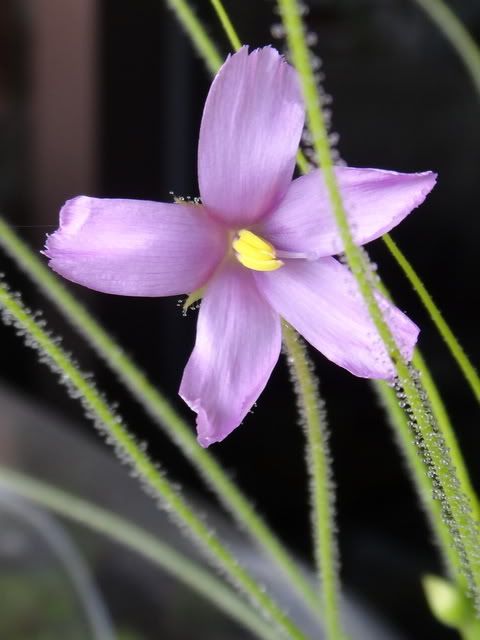 Anther length cf filaments - longer. Pedicels longer than leaves - no 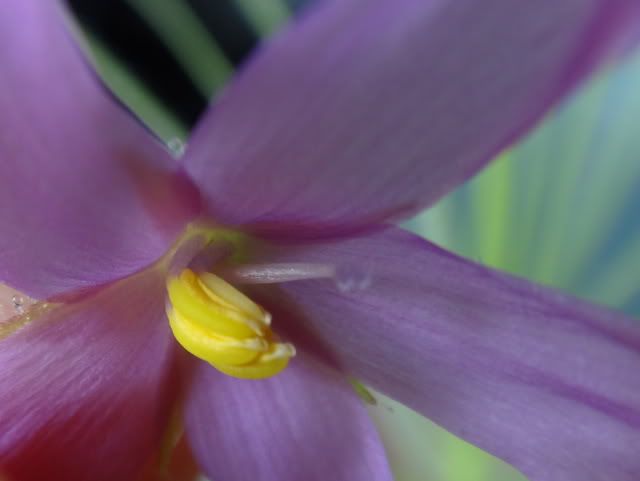 B. liniflora(?) - mauve flowers atypical of liniflora; may be mislabelled so will try self-pollination to confirm ID  Sepals are dark 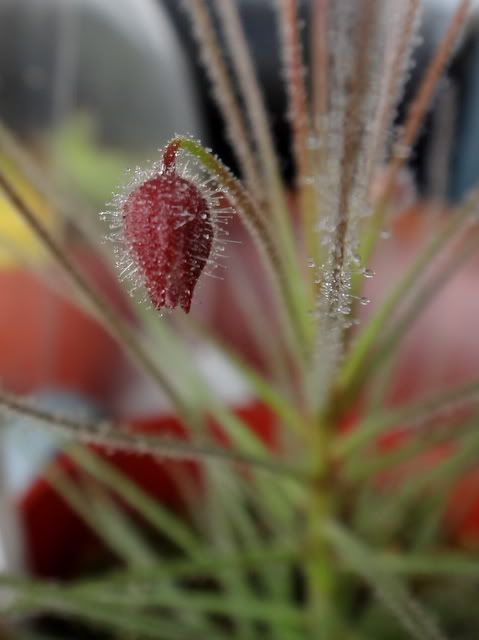 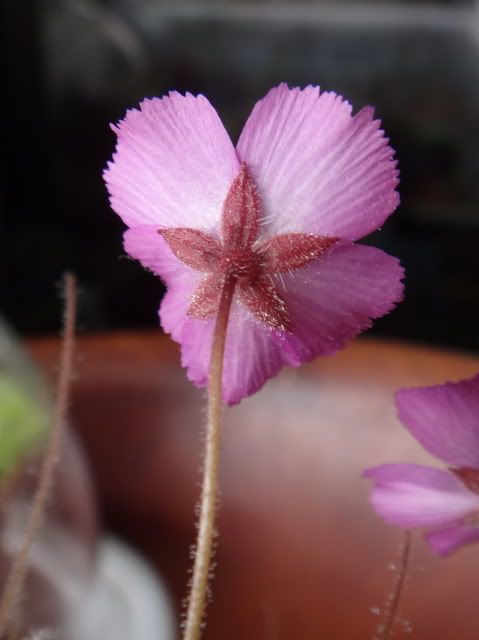 Anther length cf filaments - half. Pedicels longer than leaves - yes 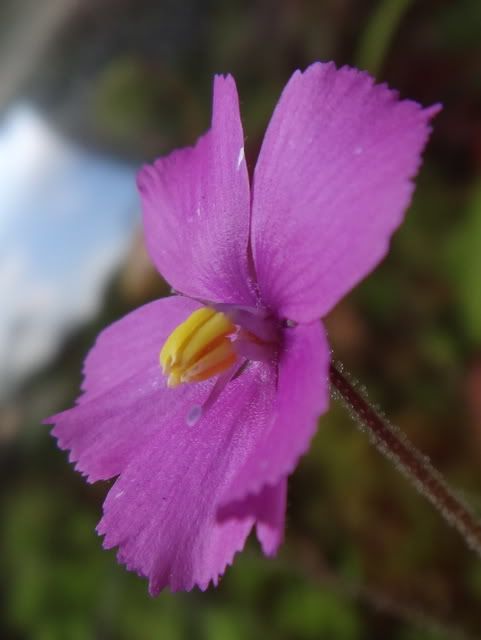 |
|
sweetpea
Full Member
MOLLIE RILSTONE
Posts: 163
|
Post by sweetpea on May 6, 2012 10:16:10 GMT
|
|
|
|
Post by gregallan on May 8, 2012 20:10:24 GMT
Hi Cindy,
Wonderful plants! I particularly like the one on the right. Do you have any closeups of the leaves? Also, I really think that there are some outstanding taxonomical issues within this genus. I think that the B filifolia forms with leaves that are longer than the pedicels may be different species from or, if not deserving of species status, ought to be taxonomically separated from, some other B filifolia forms. They look completely different from the slender forms such as Goliath and the form from Boulk area, which have pedicels which are far longer than the leaves and, to me at least, appear more akin to B guehoi, albeit without the vigour of that species. Of course, I am not a taxonomist, and these opinions are based purely on my personal observations of plants in the my cultivation and photos of wild plants.
|
|
cindy
Full Member
Posts: 226
|
Post by cindy on May 9, 2012 3:50:14 GMT
Hi Greg,
OK, I'll try and take close-up of the leaves of the B. liniflora(?). What are you looking at in particular? The thickness, the length, the density of the tentacles (an interesting feature for me) or the size of the dew drop?
So far, some other info I gathered:
1. The seeds are from Theda Station, Kimberley.
2. The stem is thick, which is another reason why I suspect that it is not a B. liniflora.
3. A fruit is formed on the 1st flower which is self-pollinated. Not sure if there is seed in it at the moment. Interestingly, the pedicel is still upright.
4. A fruit is formed on the 2nd flower which is cross-pollinated with the plant on the left. The fruit is significantly larger. The pedicel is lowered.
The chance of natural cross-pollination between the two plants is very low as my growing conditions do not have buzzing insects like bees. Also, the humidity is constantly high and that impedes self-pollination.
|
|
cindy
Full Member
Posts: 226
|
Post by cindy on May 12, 2012 10:11:03 GMT
Hi Greg, Here are some pics of the stem and leaves from the B. liniflora(?).  Mid portion of stem 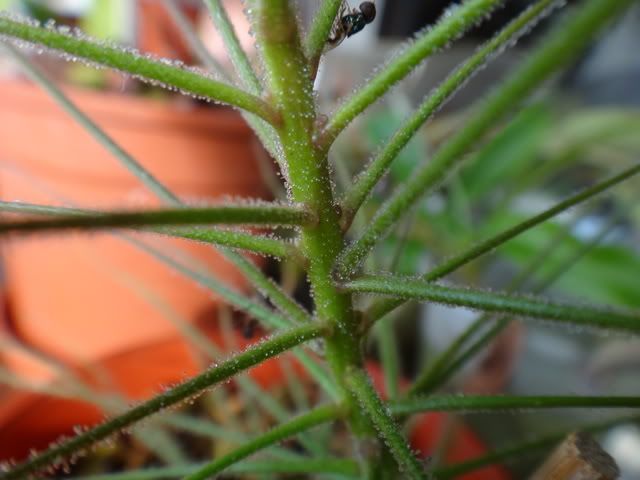 Upper portion of stem 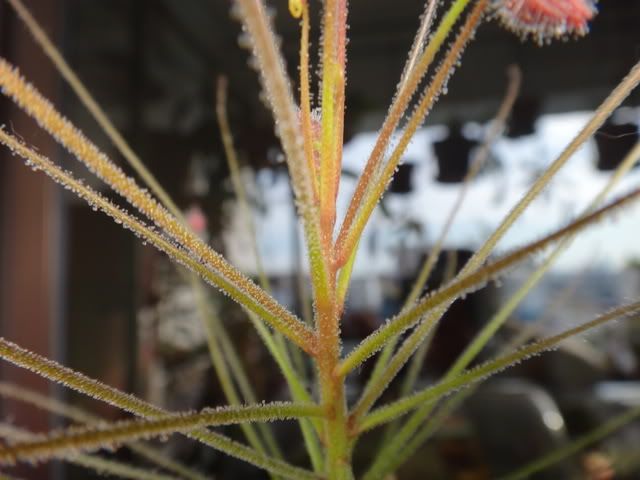 Latest leaves are red 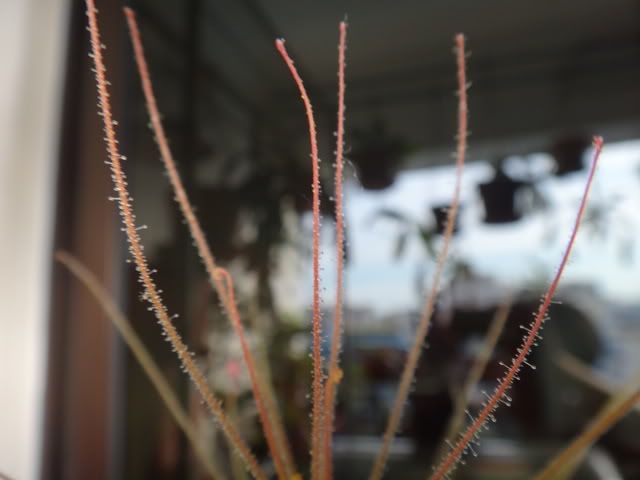 Tentacles on leaf 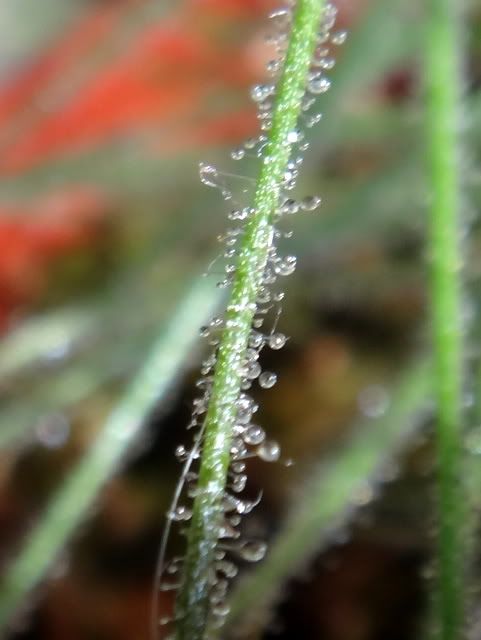 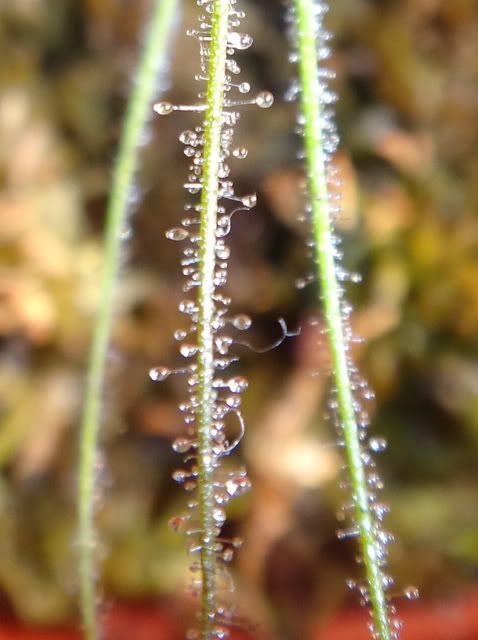 |
|
cindy
Full Member
Posts: 226
|
Post by cindy on May 12, 2012 10:14:19 GMT
And just for the fun of experimentation... ;D B. filifolia selfed  B. filifolia crossed 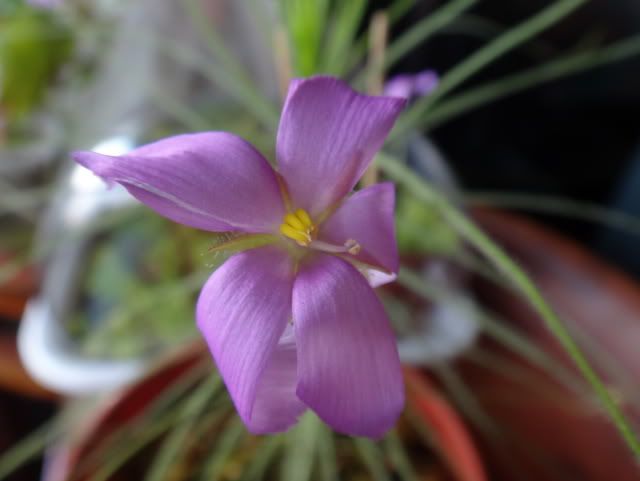 B. liniflora(?) selfed 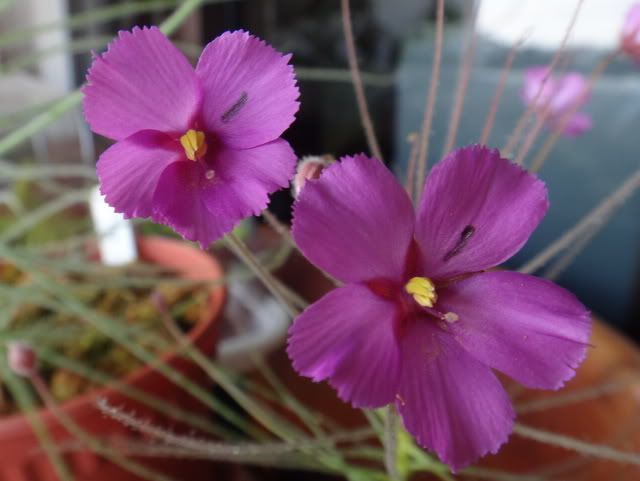 B. liniflora(?) crossed 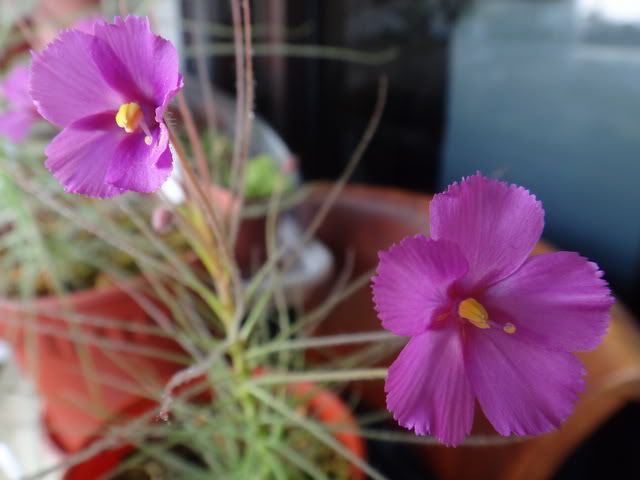 |
|
|
|
Post by gregallan on May 13, 2012 12:31:23 GMT
Thanks, Cindy. It really doesn't look like any B liniflora that I've ever seen. It's an especially beautiful plant, however. Did the seeds come from Allen Lowrie?
|
|
cindy
Full Member
Posts: 226
|
Post by cindy on May 14, 2012 9:28:00 GMT
Yes, the seeds came from Allen Lowrie. I need to see if I have more of the same seeds to sow.
|
|
sweetpea
Full Member
MOLLIE RILSTONE
Posts: 163
|
Post by sweetpea on May 15, 2012 7:22:44 GMT
Konnichiwa!  I guess Mr. Allen Lowrie sent it to Cindy-san just by accident. Both Allen-san and myself know that Byblis very well. Allen-san sure doesn't think that it is Byblis liniflora. So please enjoy it as Byblis filifolia or Byblis aff. filifolia for the moment!!! Both JohnnyBlaze-san's and Cindy-san's plant is same one and listed on Mr. Allen Lowrie's catalogue in the past. Greg-san, please go to: www.cpukforum.com/forum/index.php?showtopic=30789and see post #6: photo 10 and Allen-san's old list. I believe many cp growers have (had) grown it. Kind regards |
|
cindy
Full Member
Posts: 226
|
Post by cindy on May 15, 2012 14:17:57 GMT
Dear sweetpea-san,
Thank you for the clarification! From the photo, the plant branches right? And there is only one plant per pot?
Cheers!
|
|
|
|
Post by westmeetseast on May 17, 2012 20:12:55 GMT
Here's a pic of my plant that Sweet Pea was referencing, btw  Attachments:
|
|
sweetpea
Full Member
MOLLIE RILSTONE
Posts: 163
|
Post by sweetpea on May 18, 2012 12:12:32 GMT
Dear Westmeetseast-san,
Thanks a lot for posting your fantastic photo! Really great plant!
Dear Cindy-san,
I forecast that your clone grows a branched plant. From your photo, your clone has already started branching? Please keep posting!
Kind regards
|
|
cindy
Full Member
Posts: 226
|
Post by cindy on May 20, 2012 9:53:10 GMT
Dear sweetpea-san,
I have just repotted the plant as the roots are restricted in that 3" pot. I'll update once the plant starts branching.
Cheers!
|
|
|
|
Post by coldcoffee on May 27, 2012 21:50:57 GMT
Cindy,
I very much appreciate the work you are doing with Byblis. I love the genus, I wish I had more Byblis species in my collection. To me they are the most elegant and beautiful of the carnivores. (Of course, who can resist a nice Utricularia flower- really?)
Your pictures are always a real treat! Thank you.
|
|
cindy
Full Member
Posts: 226
|
Post by cindy on May 28, 2012 15:37:12 GMT
Dear Cindy-san, I forecast that your clone grows a branched plant. From your photo, your clone has already started branching? Please keep posting! Kind regards Dear sweetpea-san, As you have predicted.  The plant started to branch right after it was repotted into a larger vessel. 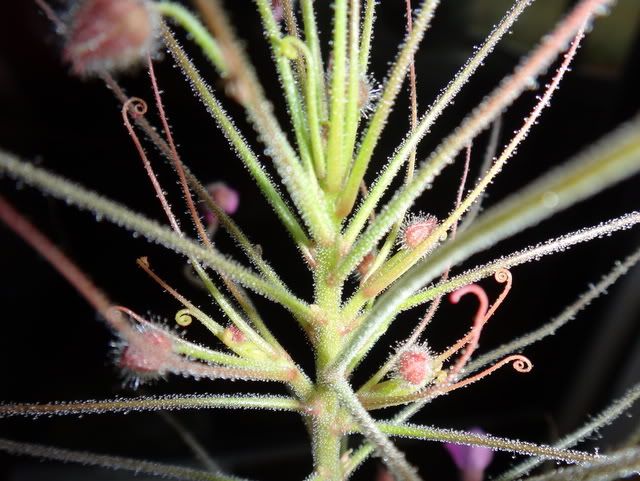 The condition of its roots in the previous 3" pot. 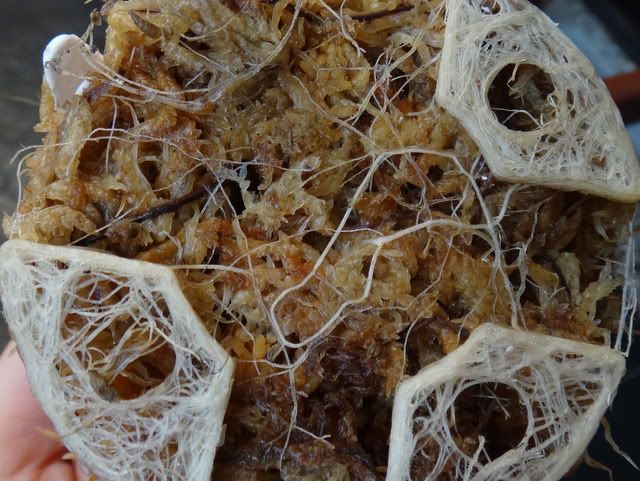 |
|







